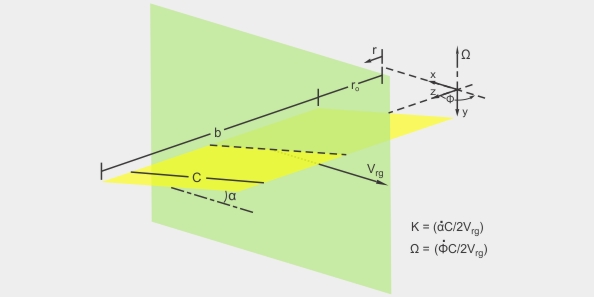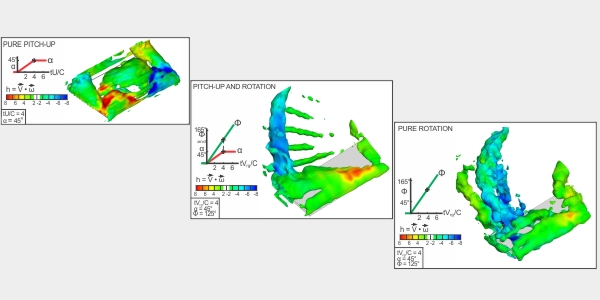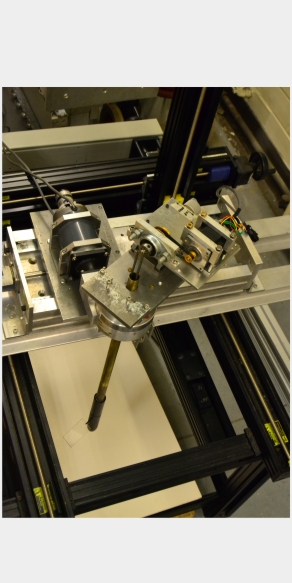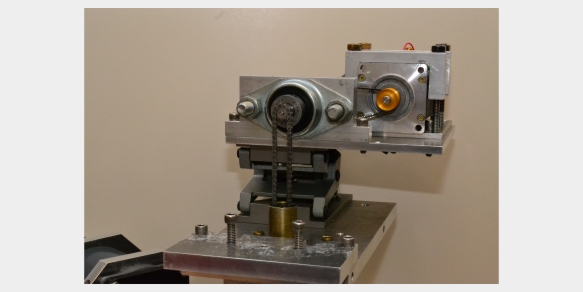SIMULTANEOUS PITCH-UP AND ROTATION
Simultaneous Pitch-Up and Rotation Maneuvers: The present investigation focusses on the detailed flow structure along a low aspect ratio wing undergoing a prevalent combination of motions, i.e., combined pitch-up and rotation, in comparison with simple pitch-up and pure rotation. Of particular interest is the effect of rotation on the evolution of the flow structure induced by pitch-up motion. Quantitative imaging is employed to characterize the detailed three-dimensional flow structure.
The pitch-up motion of a wing is a classic maneuver that gives rise to a large-scale leading-edge vortex, which moves away from the wing and in the downstream direction with increasing time. If the wing has a small aspect ratio, formation of the leading-edge vortex takes the form of an arch vortex, and at the plane of symmetry of the wing, the large-scale vortex rapidly departs from the leading-edge. It is demonstrated herein that the nature of the pitch-induced vortex at the leading-edge is fundamentally altered in presence of wing rotation. That is, the leading-edge vortex remains at, and close to, the surface of the leading-edge of the wing with the addition of rotation.
Principal Investigators: M. Bross and D.R.T. Smith

Several representations of three-dimensional flow strucutre on wings undergoing unsteady manuevers are displayed below.

Images of three-dimensional helical density on iso-Q surfaces for a wing undergoing pure pitch-up, combined pitch-up and rotation, and pure rotation are displayed above. The helical density, h, or helicity per unit volume, is calculated by taking the scalar product of the three-dimensional velocity field V and the three-dimensional vorticity field ω, i.e. h = (V∙ω). Helical density indicates to what degree a flow structure is three dimensional and serves as an indicator of vorticity flux on the primary axis of the vortex. Values of h on the purely pitching wing have opposite signs, i.e., opposite (red and blue) colors on either side of the midplane of the wing, extending to a region ahead of the arch vortex. For the combined pitching and rotating wing, a relatively large extent of positive (red-yellow) h persists near the root of the leading-edge vortex. For the purely rotating wing, however, a much smaller spatial extent region of (red-yellow) levels of h exist in the same region of the leading-edge vortex. Correspondingly, the iso-Q surface that represents the leading-edge vortex has degenerated into a form involving several finger-like iso-Q surfaces along and downstream of the leading-edge. In essence, the larger extent of (red-yellow) helicity close to the root of the leading-edge vortex on the wing undergoing simultaneous pitch-up and rotation is correlated with preservation of integrity of the entire leading-edge vortex. The converse occurs for the wing experiencing pure rotation.
Images of Pitch-Up and Rotation apparatus are shown below.



